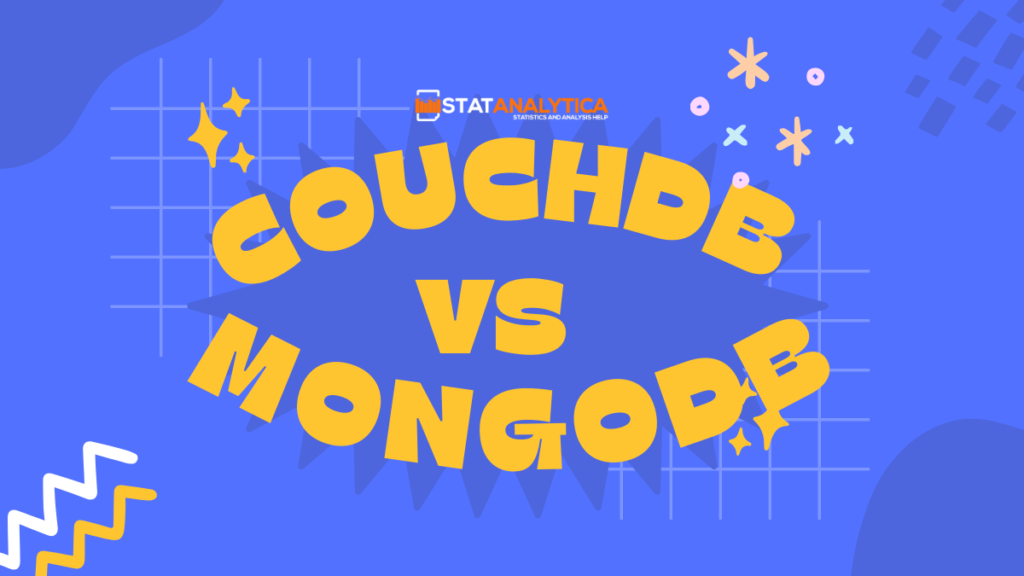When it comes to storing data in modern applications, two popular choices are CouchDB vs MongoDB. Both of these are NoSQL databases, meaning they don’t use traditional table-based structures like SQL databases (such as MySQL or PostgreSQL). Instead, they use different ways to store data that can be more flexible and scalable. But what exactly are CouchDB and MongoDB, and how do they differ? Let’s dive in!
What Are NoSQL Databases?
Table of Contents
Before we compare CouchDB and MongoDB, it’s important to understand what NoSQL databases are. NoSQL stands for “Not Only SQL.” These databases are built to manage vast amounts of data and accommodate different types of data structures, such as:
- Document-oriented databases (like CouchDB and MongoDB)
- Key-value stores (like Redis)
- Wide-column stores (like Cassandra)
- Graph databases (like Neo4j)
NoSQL databases are popular because they are flexible, scalable, and fast, making them ideal for modern apps that need to manage large amounts of data and many users.
CouchDB: An Overview
What is CouchDB?
CouchDB is an open-source, document-oriented NoSQL database developed by the Apache Software Foundation. It stores data in JSON-like documents, which makes it easy to work with in web applications. One of CouchDB’s standout features is its emphasis on “eventual consistency” and replication, making it a great choice for distributed systems.
Key Features of CouchDB
- JSON Document Storage: Data in CouchDB is stored as JSON documents. Each document can contain various types of data, such as text, numbers, and even lists.
- MapReduce: CouchDB uses MapReduce for querying and processing data. MapReduce is a powerful tool for handling large datasets and complex queries.
- Replication: CouchDB supports multi-master replication, meaning data can be copied and synchronized across multiple servers. This makes it highly resilient and scalable.
- HTTP API: CouchDB uses an HTTP-based RESTful API for interacting with the database, making it easy to integrate with web applications.
- Eventual Consistency: Instead of ensuring immediate consistency across all nodes, CouchDB ensures that, given time, all changes will propagate through the system, leading to eventual consistency.
Example of CouchDB Usage
Imagine you have a simple web application for managing a library’s book collection. Each book can be represented as a JSON document with various fields like title, author, publication year, and genre.
Here’s what a book document might look like in CouchDB:
| { “_id”: “book123”, “title”: “To Kill a Mockingbird”, “author”: “Harper Lee”, “publication_year”: 1960, “genre”: “Fiction” } |
You can easily store, retrieve, and update these documents using CouchDB’s HTTP API.
MongoDB: An Overview
What is MongoDB?
MongoDB is another popular open-source, document-oriented NoSQL database. It is developed by MongoDB Inc. and is designed for high performance, high availability, and easy scalability. Like CouchDB, MongoDB stores data in JSON-like documents but with a focus on immediate consistency and complex queries.
Key Features of MongoDB
- BSON Document Storage: MongoDB stores data in BSON (Binary JSON) format, which allows for richer data types and more efficient storage.
- Ad Hoc Queries: MongoDB supports a wide range of query types, allowing for complex searches, filtering, and data manipulation.
- Indexing: MongoDB supports various types of indexes to improve query performance.
- Replication: MongoDB supports replica sets, which provide automatic failover and data redundancy.
- Sharding: MongoDB can distribute data across multiple servers using sharding, enabling horizontal scaling.
Example of MongoDB Usage
Using the same library example, a book document in MongoDB might look similar to CouchDB’s but stored in BSON format:
| { “_id”: “book123”, “title”: “To Kill a Mockingbird”, “author”: “Harper Lee”, “publication_year”: 1960, “genre”: “Fiction” } |
MongoDB allows you to perform complex queries and updates on this document, leveraging its powerful query language and indexing capabilities.
Comparing: CouchDB vs MongoDB
Now that we have a basic understanding of CouchDB and MongoDB, let’s compare them based on several key aspects.
Data Storage
- CouchDB: Stores data as JSON documents.
- MongoDB: Stores data as BSON documents.
- Both databases store data in a document format, but MongoDB’s BSON format supports more complex data types.
Querying and Indexing
- CouchDB: Uses MapReduce for querying, which can be powerful but may require more complex setup for advanced queries.
- MongoDB: Offers a rich query language with support for ad hoc queries and various indexing options, making it more flexible for complex queries.
Consistency Model
- CouchDB: Emphasizes eventual consistency, meaning changes will propagate over time to all nodes.
- MongoDB: Emphasizes immediate consistency, ensuring that once a change is made, it is immediately reflected in all reads.
Replication
- CouchDB: Supports multi-master replication, allowing data to be synchronized across multiple servers.
- MongoDB: Uses replica sets for replication, providing automatic failover and redundancy.
Scalability
- CouchDB: Scales well in distributed environments due to its replication and eventual consistency model.
- MongoDB: Supports horizontal scaling through sharding, distributing data across multiple servers to handle large datasets and high traffic.
Use Cases
- CouchDB: Suitable for applications requiring distributed data storage with eventual consistency, such as offline-first applications and systems that need to handle intermittent connectivity.
- MongoDB: Ideal for applications needing high performance, immediate consistency, and complex querying, such as real-time analytics, content management systems, and IoT applications.
CouchDB vs MongoDB: Head-To-Head Comparison
| Feature | CouchDB | MongoDB |
| Data Model | Document-oriented model, data in JSON format. | Document-oriented model, data in BSON format. |
| Interface | Uses an HTTP/REST-based interface | Uses binary protocol and custom protocol over TCP/IP. |
| Object Storage | Database contains documents. | Database contains collections, and collections contain documents. |
| Speed | Read speed is slower compared to MongoDB. | Provides faster read speeds. |
| Mobile Support | Supports mobile devices, can run on Apple iOS and Android. | No mobile support provided. |
| Size | Grows well, suitable for less-defined initial structures. | Better for rapid growth with less defined initial structures. |
| Query Method | Uses map-reduce functions, can be more difficult for SQL-experienced users. | Uses Map/Reduce (JavaScript), collection + object-based query language, easier for SQL users. |
| Replication | Supports master-master replication with custom conflict resolution functions. | Supports master-slave replication. |
| Concurrency | Follows MVCC (Multi-Version Concurrency Control). | Updates in-place. |
| Preferences | Favors availability. | Favors consistency. |
| Performance Consistency | Generally safer. | Faster but potentially less safe. |
| Consistency | Eventually consistent. | Strongly consistent. |
| Written in | Written in Erlang. | Written in C++. |
| Analysis | Great for mobile, master-master replication, or single server durability. | Ideal for maximum throughput and rapidly growing databases. |
Real-World Examples
CouchDB in Action
One notable use of CouchDB is in the Apache Couchbase project, which combines the strengths of CouchDB with those of Memcached to provide a robust, scalable database solution. It’s used in scenarios where offline access and data synchronization are critical, such as mobile applications.
MongoDB in Action
MongoDB is used by many large-scale applications, including companies like Uber and eBay. Uber uses MongoDB to manage and query the large volumes of geospatial data required for its ride-hailing service, leveraging MongoDB’s powerful querying capabilities and scalability.
Which One to Choose?
If you need a database that supports flexible data models, handles large amounts of data, and requires high scalability, both CouchDB and MongoDB are excellent choices. However, consider the following:
- Choose CouchDB if your application needs to handle intermittent connectivity, requires offline capabilities, and can work with eventual consistency.
- Choose MongoDB if your application demands immediate consistency, complex queries, and needs to scale horizontally across multiple servers.
By understanding the unique features and strengths of CouchDB and MongoDB, you can select the right database to power your next big project.
Conclusion
Both CouchDB and MongoDB are powerful NoSQL databases, each with its strengths and ideal use cases. Here’s a quick recap:
- CouchDB:
- JSON document storage
- Eventual consistency
- Multi-master replication
- Ideal for distributed systems with offline capabilities
- MongoDB:
- BSON document storage
- Immediate consistency
- Powerful querying and indexing
- Horizontal scaling through sharding
- Suitable for high-performance applications needing complex queries
Choosing between CouchDB vs MongoDB depends on your application’s specific requirements, such as the need for consistency, scalability, and query complexity. By understanding their differences, you can make an informed decision that best fits your needs.


